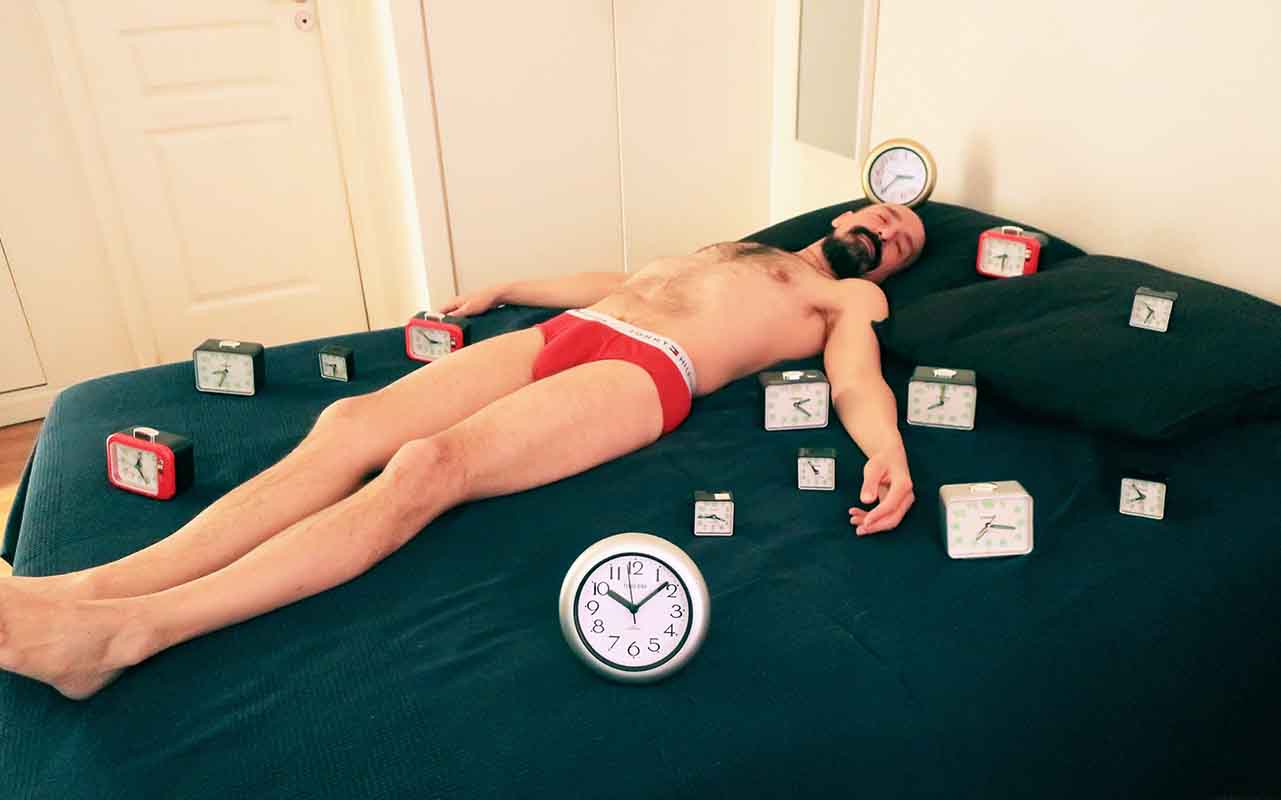Sleeping in between Tehching Hseih and On Kawara
(but, at home)

- Material:
Your body clock and several alarm clocks that have the snooze function. (A smartphone could be used alternatively if you don’t have an alarm clock). - Preparation:
Place the alarm clocks on your bed or the place where you usually sleep at home. Your performance space will look like an installation. Set up a chain of alarms on each clock with a range of different hours (for example, 6:30 am, 6:45 am, 7:00 am, 7:15 am to 6:30 pm - depending on how many clocks you have). Go to sleep next to all the clocks. When you wake up with the sound of an alarm, stop it, and go back to sleep. You will be woken intermittently and repeatedly as the alarms are snoozed and the next alarm goes off. (If you use a smartphone, the instructions are the same for the settings of the alarms on your app.) - Task:
Try to fall asleep as deeply as possible despite the alarms being annoying. You will be wakened by the alarms as usual in this performance, but you will repeat the cycle of sleeping and being awake. This durational performance is a challenging practice for your body and mind during this time of global crisis. Try to enjoy the exhaustion and the state in between sleep and wakefulness. When you start imagining the sound of alarms, congratulations! And then: continue. - Note:
This performance is adapted from “Sleeping in between Tehching Hseih and On Kawara” which is part of my ongoing Alarm Clock Series Project. The original piece is positioned in between similar yet different notions of the practice of the artists Tehching Hseih and On Kawara. Their work results in excellent performances. It participates in and documents the progress of life and the construct of time. The primary action in this work is to repeat waking and sleep cycles through alarm clocks. This traps one in the incessant progress of time. The looping of the sleep-cycle deconstructs the idea of setting an alarm to signal time. During the performance the boundary between work and rest is ambiguous. There is no clear beginning or end to your labor. The time alert seems to suggest that nothing is urgent anymore. This “working at home” version invites you to examine how you live and spend your time. What are you doing or what are you forced to do while supposedly being kept busy every day?
Work by
River Lin